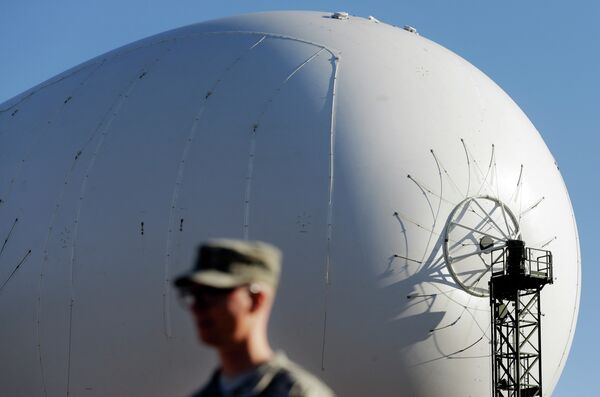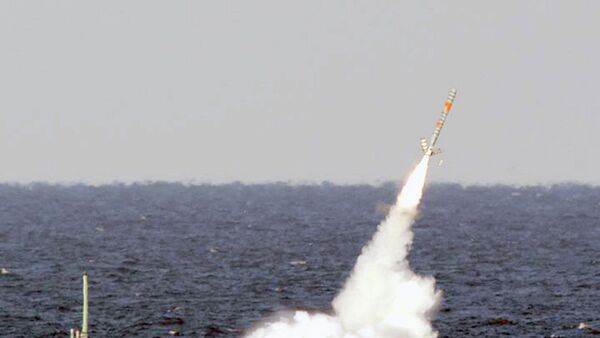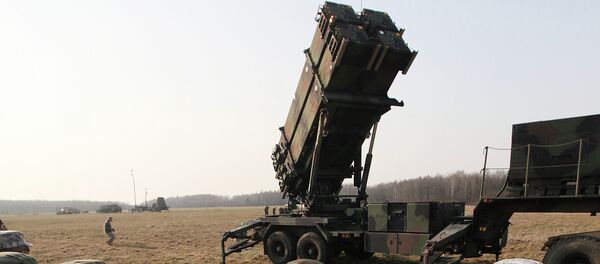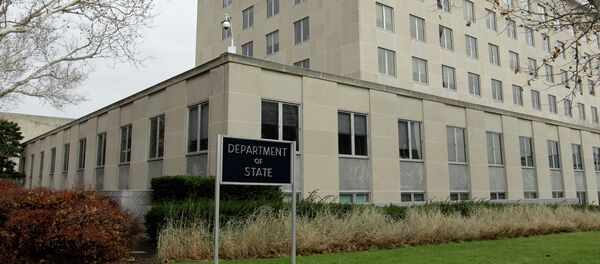"A handful of senior military officials, including several current or past NORTHCOM commanders, have been among those quietly dinging the bell about cruise missile threats, and it’s beginning to be heard," Thomas Karako, a senior fellow at the Center for Strategic and International Studies in Washington, told Defense One.
To counter that threat, the Pentagon is working to install a high-tech radar system that would track incoming, low-flying missiles. Installed in aerostat balloons over major cities, as well as onboard warships off the coast, the radar would transmit warning signals to F-16 fighter jets if an enemy missile were detected.
The Pentagon has remained fairly quiet about the details of the missile defense shield, giving little indication of what the total cost would be to the taxpayer. But the cost of other failed defense shield attempts could provide some idea.
Last year, the Los Angeles Times reported on the costly endeavor of the Midcourse Defense System (GMD), a shield developed by Northrop Grumman and Raytheon. During a trial run, the GMD failed 8 out of 16 tests, with each test costing $200 million.
That, of course, was only a fraction of the total.
"Although American taxpayers have spent $40 billion during the past decade to develop the GMD system, the missile shield’s performance is spotty at best," according to the LA Times, "even in carefully choreographed tests that are more predictable and less challenging than an actual attack would be."
Earlier this year, it was reported that the US Defense Department had requested a total of $8.8 billion in the 2016 budget for all missile defense systems. Given the complexities of developing a system of countering cruise missiles, which are relatively small and agile, a large portion of those funds could go toward the new project.

"While ballistic missile defense has now become established as a key military capability, the corresponding counters to cruise missiles have been prioritized far more slowly," Karako said.
"In some ways, this is understandable, in terms of the complexity of the threat, but sophisticated cruise missile technologies now out there are just not going away and we are going to have to find a way to deal with this – for the homeland, for allies and partners broad, and for regional combatant commanders."
Even if the technology is developed effectively, implementing the system will also prove costly.
"This is a big country and we probably couldn’t protect the entire place from cruise missile attack unless we want to break the bank," Admiral Sandy Winnefeld, vice chairman of the Joint Chiefs of Staff, said in a speech. "But there are important areas in this country we need to make sure are defended from that kind of attack."
But all the money being poured into the project seems especially pointless given that it’s meant to defend against an illusory threat from Russia.
"The only nation that has an effective cruise missile capability is Russia," Admiral William Gortney, head of US Northern Command said during a House Armed Services hearing in March.
These concerns were echoed by former NORAD commander General Charles Jacoby last August during a missile defense conference.
"We’ve made a case that growing cruise missile technology in our state adversaries, like Russia and China, present a real problem for our current defenses," Jacoby said.
The US isn’t the only one spending millions on false threats from an "aggressive" Russia. Earlier on Friday, it was reported that the Finnish government had bid $3.72 million on a plot of land within its own borders to prevent a Russian citizen from obtaining the deed.
Sweden has also increased its fearmongering, tossing out baseless claims about Russian submarines in its territorial waters.
"This was done, as far as can be judged, to ramp up the anti-Russian hysteria and give a propagandist boost to the myth of a 'military threat' from the East," the Russian foreign ministry responded in a statement.
Russia’s deputy defense minister Anatoly Antonov echoed the sentiment:
"The US is ramping up the issue of ‘Russian violations’ to justify their own ostensibly responsive military action that would be aimed at ensuring American 'leadership' in confrontation with the mythical ‘Russian military threat’ that Washington drums up regardless of all facts to the contrary," he said earlier this month in response to the US accusing Russia of missile violations.
It looks like that "anti-Russia hysteria" will now cost Americans billions.





